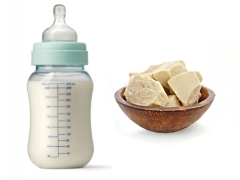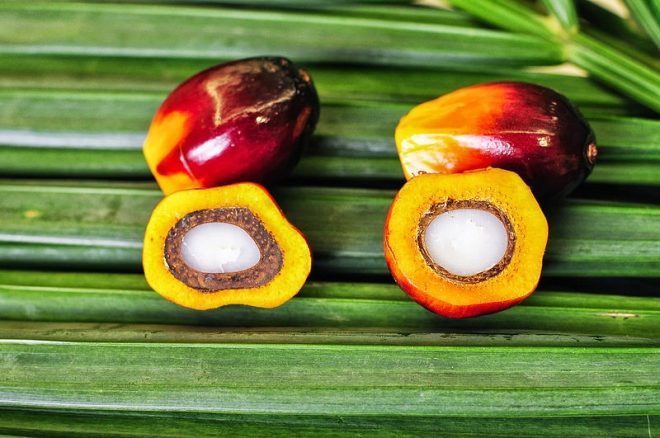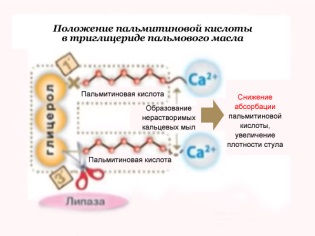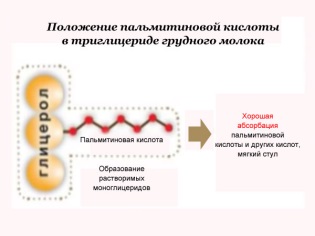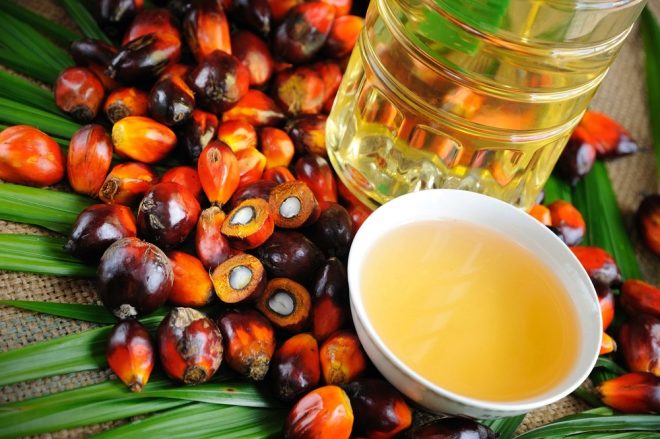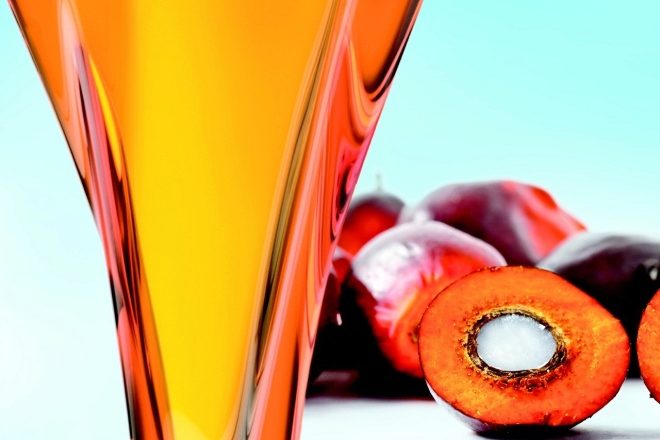Is palm oil harmful in mixtures and baby food?
The harmful effects of palm oil are often discussed in the media, so attentive parents are alarmed by the fact that this ingredient is found in most infant formulas. Is it harmful to children and why is it added to baby food?
What is it?
Palm oil is a vegetable oil, the source of which are the fruits of oil palm. It is allowed to be used in food in all countries of the world.
Palm olein and how it differs from palm oil
Palm olein is one of the fractions of fats found in palm oil. It has a lower melting point (from 19 to 24 ° C). At 20 ° C, this fraction contains no more than 9% solid fat.
Palm olein has beneficial properties similar to olive oil. When used in moderation (in baby food its amount is balanced), it lowers the level of blood cholesterol, preventing the appearance of cardiovascular diseases. This fraction is mainly used in the manufacture of baby food.
Benefit
- Contains more vitamins E and A than in other oils.
- Well digested (better than milk fat).
- Rich in carotenoids.
Harm
- Researches have confirmed that babies assimilate calcium worse from mixtures with it (by 15-20%), than children fed mixtures without this ingredient. That is why in modern mixtures, more calcium is often added than is found in breast milk. Otherwise, a decrease in bone density and various complications associated with this are possible.
- Since it has a large amount of saturated fatty acids, excessive consumption of such a product, as well as sources of animal fats, threatens problems with the cardiovascular system. However, compared to butter, it is less dangerous, since its degree of unsaturation is 2 times higher (1 vs. 0.5).
- Also, an excess in the diet leads to weight gain.
- The density of the chair increases, which is fraught with problems with the gastrointestinal tract. This fact is confirmed by numerous clinical studies. It is only about ordinary palm oil, structured and close to breast milk does not have such effects.
Opinion of Dr. Komarovsky on palm oil, see the following transfer.
Palmitic acid in breast milk and baby food - differences
The differences in properties are primarily related to the location of palmitic acid on the fat molecule:
- In palm oil, it is in the lateral position and therefore easily accessible for digestion. As a result of digestion, it binds the calcium present in baby food and forms insoluble salt formations that the intestine does not absorb, resulting in an increase in stool density.
- In breast milk, it is mainly in the center and is not available during digestion, lipase does not act on it, it is absorbed in the intestine in its original form.
There is an exit! Structured acid or beta palmitate in mixtures
The position of palmitic acid in high-quality specialized blends alter and bring the palm olein molecule closer to the breast milk molecule. Such modified palm oil is called structured or β – palmitate. Clinical studies have confirmed that the frequency and density of the chair when used with mixtures with it was similar to that observed during breastfeeding.
At the same time, the first patent for modern beta-palmitate was obtained by the Betapol brand in Europe in 1987, and in the USA in 1997.
Fractions
There are different fractions of palm oil.
Among them are the two main factions:
- liquid (olein);
- solid (stearin).
Specifications
Palm oil has a red-orange hue and a semi-solid consistency. It is a mixture of many fractions of fats, differing physico-chemical parameters and melting point. The main fatty acids in it are palmitic (among saturated) and oleic (among unsaturated).
Common Myths
Among moms and dads, the following statements about palm oil were formed, which are far from reality:
- Consumption brings only harm to the body. This is not so, because people first met this oil more than 5,000 years ago. Even in the times of ancient Egypt, it began to be eaten and was considered a useful product. In moderation from his body gets a lot of benefit.
- It is not added to blends in Europe. In fact, European manufacturers add it to their products, but they usually simply write “vegetable oil” on the label. Palm oil is most often replaced with β – palmitate.
- The reason for adding to the mixture is low cost. In fact, well-refined and high-quality butter is added to infant formula, the price of which is comparable to the cost of sunflower oil.
- Due to the high melting point, palm oil remains in the human body, as the temperature of our body is below its melting point. Indeed, at room temperature, it has a semi-solid consistency, and it becomes liquid at temperatures above 39 degrees. However, the melting point of the oil is not related to its digestion. Once in the digestive tract, the oil does not melt at all, but is broken down with the help of enzymes.
Baby food is a good business. Therefore, many unscrupulous manufacturers can spread rumors about the benefits or harms of any component in order to advertise a new mixture with or without it. Therefore, you should be wary of such information and consult with experts.
Why add to baby food?
Thanks to the addition of palm oil, baby food is saturated with fats that the baby needs for normal development. The baby who receives mother's milk is really lucky, since the fats in its composition are useful and important for the development of crumbs.
About a quarter of all fats in breast milk are represented by palmitic acid, which is not contained in the milk of cow or goat. And the desire of manufacturers to bring the composition of infant formula as close as possible to the composition of mother's milk by entering into the composition of palm oil is connected with this fact. In addition, during the production of the mixture from the whey, some of the fats are removed from it, therefore, they are filled with other fatty acids.
For the normal functioning and development of the baby should receive enough fat, which not only act as an energy source, but also necessary for the formation of cells. In modern mixtures include a mixture of fats from milk and vegetable oils, which also includes palm. Purchase infant formula only with structured palm oil. Such mixtures will be as similar to milk from my mother's breast as possible.
In addition to the mixtures, it is added to soluble cereals, baby cookies and various sweets. In the food industry, they are substituted for milk fat, cocoa butter and other fats.You can find it in mayonnaise, margarine, spreads, fused cheeses, fats for frying, confectionery. This ingredient also lengthens the shelf life of products.
Useful red
Red palm oil is a natural product, rich in vitamins and antioxidants. Its composition includes 40% unsaturated (mostly oleic acid) and 50% saturated fat. This oil contains a significant amount of vitamin E, which is important for the saturation of brain cells with oxygen, as well as vitamin A. It also contains a lot of antioxidant coenzyme Q10. The cost of this type of palm oil is quite high, so it is usually not used in the production of baby food.
Diet without palm oil
Not wanting to feed the child and yourself with palm oil, you should carefully study the labels, choosing products that do not contain them.
Mixes
Palm oil is not in the following mixtures:
- Similac. Omega fatty acids and prebiotics are added to the mixture. Among the vegetable oils of this mixture - coconut, safflower and soy.
- Nanny. This blend includes healthy fats derived from marine fish. Vegetable oils in it are coconut, sunflower and rapeseed.
Beta Palmitate Mixtures
In our opinion, this is the best solution. Study the composition and look for beta-palmitate in it.
Among the brands at the moment we know only 3 with structured palm oil: Nutrilon, Heinz and Kabrita. If you know others, welcome to the comments.
Products
Among the ready-made children's palm oil porridges are not in the products of Heinz and Spelenok. You can also prepare cereals, cookies and other sweets at home from proven products, and then you will be sure that it is completely absent from the nutrition of the child.
About palm oil shot a lot of gears, some of which you can see below.
